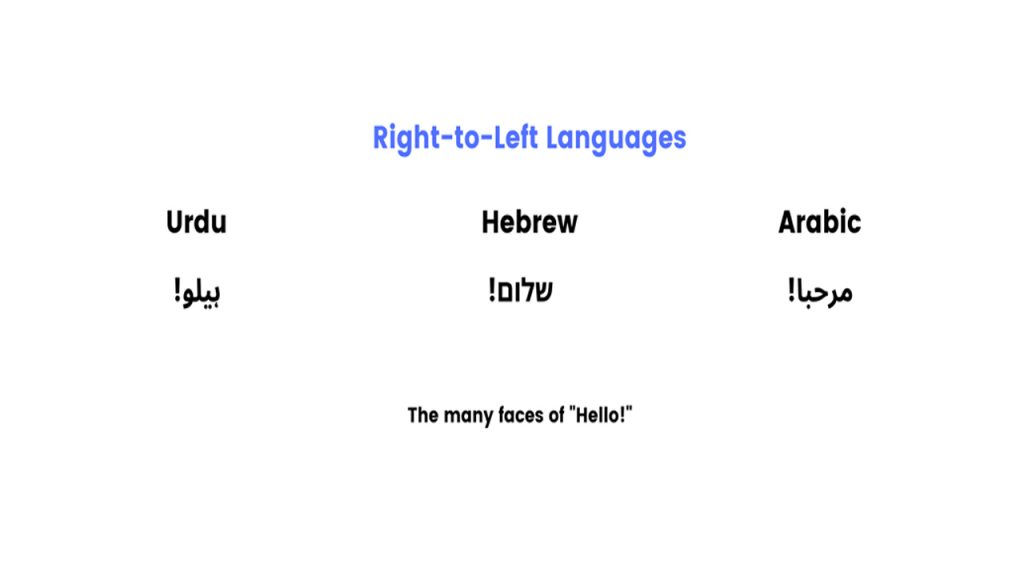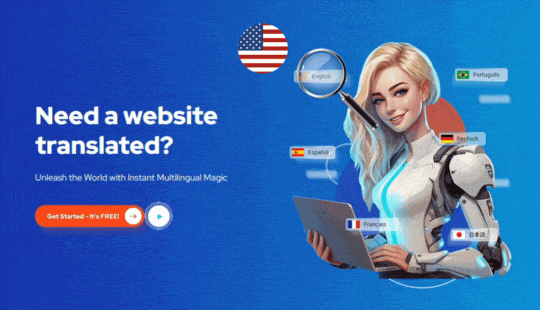
Time without numbers, we have mentioned this in our some of our blog posts that there is a possible need for website localization. The truth is that a crucial and essential element that can help you go multilingual is localization. You will be able to connect with several persons globally when your content reflects cultural familiarity.
It is easy to remember to localize obvious aspects of your website. These obvious parts are formats, styles, images, texts etc. however, you may not have captured the cultural nuances if you overlook some seeming ‘smaller’ details.
These little details may be subtle and tricky such that you may find it difficult to start to localize them. This is the reason that this article will be focusing on five (5) areas that many, including you don’t know they should localize. When you carefully go through this article and adjust to all of its details accordingly, you will witness a massive growth on a global scale.
Now, let’s get started.
First Area: Punctuation Marks
It is easy to overlook localizing punctuation marks. Some may even think there is no need considering localizing punctuation marks. However, to help you see a reason, let’s exemplify it this way: “Hello!” in English language while “¡Hola!” is in Spanish. Looking intently at the two words shows there is more to the translation done to the words than just the alphabets. A clear difference from both words is how the exclamation mark (!) is used. It is easy to think that all languages uses the same exclamation mark until you see this example.
In whatever write-up you are handling, the important of punctuation marks cannot be overemphasized because they help to convey messages in a clear and more understandable way. The use of punctuation mark dates back to a very long time when they were used for indication for speaker to stop or pause while speaking in the ancient Greece and Rome. However with time, you may witness significant changes in different cultures and among different languages today. To illustrate it further, did you know that semi colon replaces question mark in today’s Greek and the way it is written, it is written such that the semicolon is a raised dot? Did you know that in Japanese, the solid dot (.) for periods is replaced by open dot (◦)? Did you also know that all punctuation marks in English are in their inverted form in Arabic, Hebrew and Urdu because of the fact that the languages are usually written from right to left?

While it is true that use of punctuation marks varies from one place to another, they are essential components of meaningful communications. They help to give more meaning to your sentences. Hence, be careful to note the use of punctuation in the language of your target. When you follow the rules you message will be correctly and effectively conveyed.
Second Area: Idioms
A word for word approach to translation is very bad when it comes to translating idioms and idiomatic expressions. Idiomatic expressions are so culturally inclined that it may mean different thing in different cities within the same geographical location. As a result of this, it is very difficult to translate them.
For example, the expression “to eat chicken’s feet” in certain area of Africa means to be restless. Food outlets in such area may have to be careful with their adverts and their website may have to be sensitive to such idiomatic expression.
When you use idioms correctly, you are telling your audience that you are conversant with their language. It is very effective to have ample knowledge of the culture so as to use idioms efficiently. However, if it is not properly handle, it may become messy and will not present you well before your audience.
One popular example that many have heard is about the mistranslation of Pepsi motto in the Chinese language. “Pepsi Brings you back to live” does not mean “Pepsi Brings Your Ancestors Back from the Grave” as it appeared in the Chinese market. Therefore, it is best to carefully translate idioms rightly before it translates to trouble outside there.
Sometimes, it will be very difficult to find exact or something closer to an idiom in the targeted language. If such happens, rather than forcing what is not suitable, it will be best to to discard or remove it altogether.
Third Area: Colors
Colors are more than just mere pretty look. It may be perceived differently in different parts of the world.
The first example we will consider under color is the people of Namibia. When a color like green looks the same, it is still very possible for the Himba people to spot variations in that same color. Why? This is because they already have several names for green colors with different shades.

The second example, is the use of the color red among the Indians. To them it is a sign of love, beauty, purity, seduction and fertility. And sometimes they use it to represent life events like marriage. While it is like that for the Indians, the Thais associate color red with Sunday. This is because they have specific color for each day of the week.
The way colors are decoded varies as they depend on language and culture. When you are conscious of how they view colors, it will help you to reach the proper use of color.
Now think of how impressive your message will be when you carefully select colors for your contents. You may think it is something quite easy and simple and does not really count, but when you carefully considers this and act on it, it will make you outstanding among your competitors. Ensure that you are accustomed with what each color means in the targeted location and for the targeted audience. Capitalize on this and you will be surprise at how it will enhance the message you are conveying.
Fourth Area: Links
A way you can have enhanced content and also successfully redirects visitors of your website to more resources they will likely want to explore is through links.
For example, you are reading certain information on a Spanish page and you have the desire to check through other resources as the links are already provided on the page you are. But to your surprise, it takes you to a Japanese page. How will you feel? That is how it feel like when don’t personalize and localize the links on your website.
User experience will not be encouraging if your website does not reflect personalization. When there is lack of consistency in the language of your page and the language of the linked pages, users experience may not be nice and it will look like a wasted effort. Therefore, ensure that the links on your web pages are having the same language as the language of your translated website.
When you do this, you are providing local contents that will be relevant to your audience. You can do this easily by translating your external links with the help of ConveyThis and your global audience will have a wonderful user experience browsing your website.
Fifth Area: Emojis
Unlike before where emojis are not frequently used, nowadays we have emojis almost everywhere. It has become parts of internet users’ lexicon such that many cannot go a day without using it even in their professional communication. It is easy to express emotions when there is no opportunity for face to face communication.
However, using emoji is not a universal practice. In fact different users have different attitude towards its usage.
For example, a study suggests that the old style of emoji is more preferable by the UK whereas, it is common for Canadian to use money related emoji, in fact, in double folds than other nations. What about food related emoji? This is prevalent among the USA. The French are known for romance related emoji. The Arabs uses the sun emoji more than anyone when Russian prefers the snowflakes ones.
The choice of emoji is something you should be careful of when translating and localizing your contents. For example, the thumb up emoji might be seen as offensive by people from the Middle East and Greece while the smiling one does not mean happiness in the Chinese territory.
Therefore, do extensive research before you choose any emoji and be conscious of the message you are trying to pass across to your targeted audience. To know what each of the emojis stands for, visit emojipedia to learn about them.
These areas we have discussed may not be important for your website localization considering that other may not have the time to do so. This article have discussed five (5) areas that many, including you don’t know they should localize. If you carefully go through this article and adjust to all of its details accordingly, you will witness a massive growth on a global scale. ConveyThis is effective in handling all aspect that needs to be localize on your websites.

